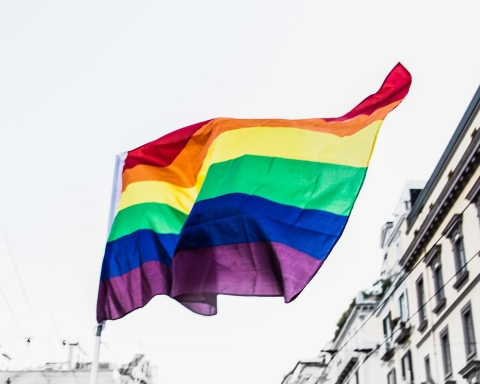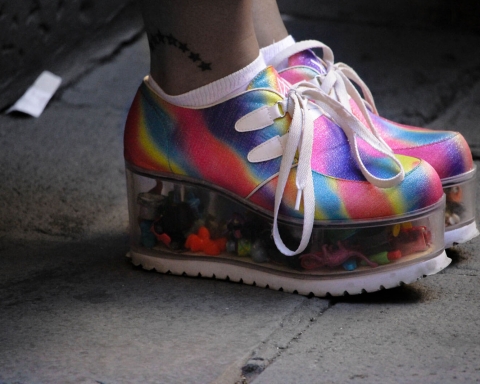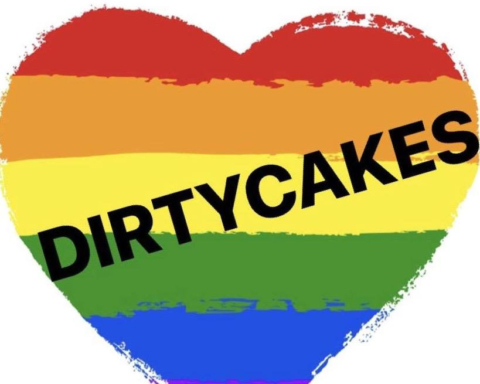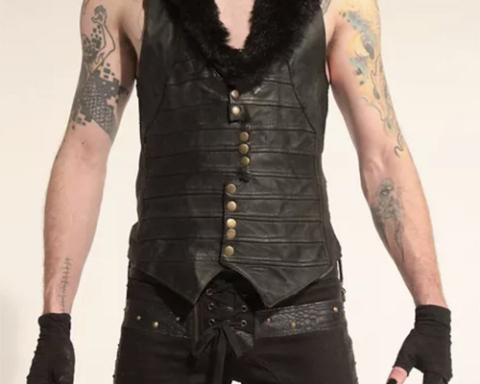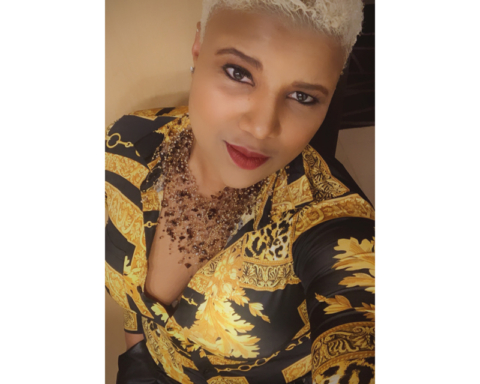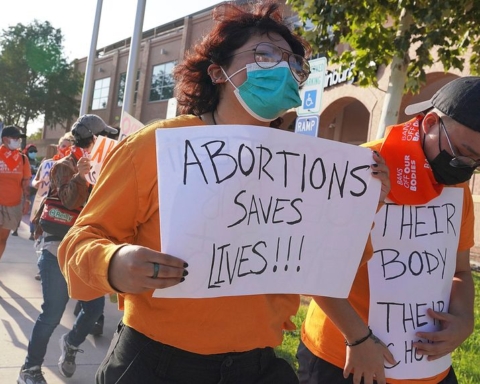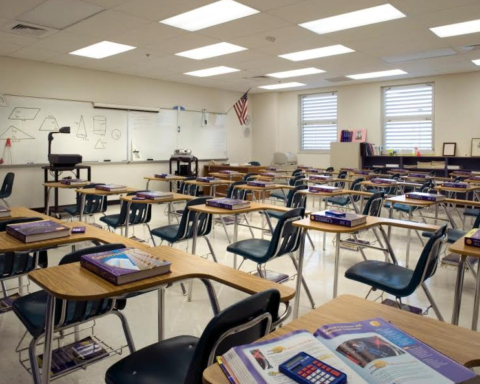The city of Philadelphia, PA added black and brown to its Pride flag in time for the city’s 2017 Pride festivities, and, as always, people freaked out.
The flag’s creation is an attempt to show inclusivity within the LGBTQ community. A year ago, volcanic tensions within the city’s “Gayborhood” erupted after a club owner was video recorded using the N-word. The city’s Gayborhood was soon inundated with protests and a dying night life.
The people of Philadelphia used social media to express their thoughts on the new flag. Most responses expressed how proud they are to live in a city that would support POC. They even coined the hashtag #MoreColorMorePride.
“Queer POC must be included & celebrated in this community. I support the updated Pride flag wholeheartedly,” wrote one twitter user.
“Thank you @PhillyLGBTgov for your commitment to making the LGBTQ community more welcoming & inclusive than ever before,” tweeted Philadelphia Mayor, Jim Kenney.
“Pretty cool to be in the first city to add black and brown stripes to [our] pride flag for purposeful LGBTQ inclusion,” wrote another Twitter user.
However, it became obvious that there are others who do not share the sentiment. And, we’re not sure if this was coincidental or not, but all opposed were white, gay males.
“But what about all the red orange yellow green blue and purple people? What will they think? Gay pride is not a race pride. Get your own event,” someone took to Twitter and wrote.
“…We are persecuted enough, why should I feel bad for being gay and for being white? This is bullsh**. The pride flag is about acceptance for sexuality and skin color. We are about mass acceptance, skin color is implied with your sexuality. Times, like the ones we are living in today, are the times when living in America pisses me off. I hate the PC reality these days,” said one Facebook rant.
“Honestly, this is kinda ridiculous. This is a flag for the LGBTQ, and now they are trying to make it about race and color. White people do not have a color specific to them, so why are we making a specific color for people of color? This is about pride of our sexuality around the world, not for race. So, instead of turning yet another thing into a race battle, we should stand with one another to keep our flag the way it should be.”
While some of these points opposing the new flag can be seen as valid, the question remains, is there racism in the LGBTQ community? I recently interviewed a group of LGBTQ men and women about their experiences. Despite their thoughts on the flag, the answer to the question was an unhesitant “yes.”
Here are some of their stories:
33-year-old Ben* stands 6ft 5inches tall. The fitness model has achieved his doctorate, and is working on his goal to be a prosecution attorney in the state of Pennsylvania. Simply put, this well-spoken man isn’t hard to spot and even harder to forget. “A few weeks ago, I attended a pride event in Asbury Park, NJ,” he says, “Nothing was unusual about the pride event. It was actually a lot of fun. I told my friend there were a lot of cute guys there, and he wanted me to go talk to them. I reply, ‘nah, I’m not sure if they’re into black guys.’ Because that’s a thing that all POC worry about. Whether they can approach someone who is white. It’s sad. It’s not that you worry you’re unattractive. It’s your skin color that you’re afraid about.
Anyway, my friend says, ‘It’s not like that here. People don’t think like that.’ As the night progressed, while leaving from hanging with a few guys, I was called the N-word by one of them. Never in my life. Not even in Oklahoma. I felt horrible, angry, hurt, scared, hostile, unwanted, and undesired. I had done nothing to deserve it – not like this guy’s actions needed to be justified. I thought everyone was having fun up until that point. So, when people claim there are no racial issues within the gay community, all they need to do is open their eyes. I have lived in Oklahoma, Kansas, South Carolina and Texas. Never in my life did I think I’d be disrespected after moving to a more liberal city.”
Kenneth is a fresh-faced 30-year-old black man, though he looks much younger. His kindness shines as he speaks, and he openly admits being raised in a polite farm town makes him a little more naive than others. “I once was talking to this guy,” he says. “He was a little younger than me and from my hometown, but we reconnected in Philadelphia. He asked me to spend the night at his place, but the way he worded it in a text was, ‘I want you to come over and make me your slave. For once, I want to call the black boy master.’ We never spoke again and he still has no idea what he said wrong.”
At night, Chris is a 26-year-old go-go dancer at a hot night club in Philadelphia, PA. But, during the day, Chris works as a massage therapist, and for an eye doctor. “For being an Asian person, you always see Grindr Profiles specifically saying, ‘No Asians,'” he says. “These same profiles always justify it by saying ‘it’s only a preference.’ But, they were totally unapologetic about excluding a whole group. They singled them out – singled me out, and basically said, ‘you’re not attractive enough for me… but it’s only preference.’ So, I believe it’s racism in disguise.”
Thomas is a 34-year-old black hair dresser. The 6ft 2in tall always dresses to impress, so much so he’s often mistaken for a model when he enters into stores. “One time, while on a date with a white guy,” he says. “I was completely fetishized and made to fit a stereotype. I was a little confused, a little amused, but mostly very annoyed.”
25-year-old Vanessa, is a mixologist and artist living in Philadelphia. She’s brilliant and driven, and loves spending her little off time with her two cats. “My past partners have made generalizing statements about my ethnicity as a Mexican-American,” she says. “And often they mention harmful stereotypes thinking it was in jest. Sometimes they say things about other Mexicans not realizing that I am a Mexican-American woman.”
So, what does this all mean? Racism exists everywhere, but it’s like every other type of discrimination. It’s not only an LGBTQ thing. And, while it’s not a problem that can be fixed by passing out cupcakes and hugs, it’s a problem that cannot be ignored. There are other types of discrimination in the LGBTQ community that are as harmful. People discriminate on body type, age, and whatever else doesn’t quite fit the mold. The only way to address these issues seems to be a simple conversation.
*Names have been changed.
Author: Aaron Lawrence



